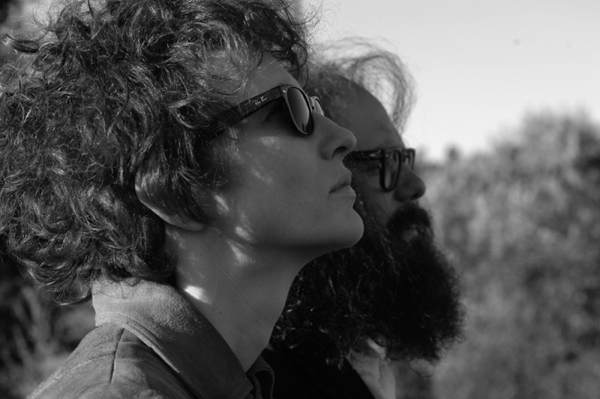Movie review by Greg Carlson
A dazzling visual exercise that can be both mesmerizing and maddening, Todd Haynes’ “I’m Not There” celebrates the myths of Bob Dylan in a carnival of re-imagined incidents from the eventful life of the self-proclaimed “song and dance man.” A labor of love garnished with the blessing of (at least) Dylan’s management, “I’m Not There” trips and skips through the singer-songwriter’s canon, eschewing chronology and coherence for stimulating conjecture and imaginative speculation. Casting six actors as Dylan-esque figures, a ploy that works better on film than it sounds on paper, Haynes stitches together one of the year’s most stimulating movie experiences.
The director aims for a kind of transcendence through suggestion, and achieves the effect just enough to keep amateur and professional Dylanologists from pulling out their hair. Two masterstrokes of casting involve African-American adolescent Marcus Carl Franklin as a freight train-hopping hobo who calls himself Woody Guthrie and chameleon Cate Blanchett as Jude Quinn, a twitchy doppelganger of the “Don’t Look Back”-era Dylan. Other performers weave in and out with varying degrees of impact. Heath Ledger plays an actor who portrays a Dylan-like figure in a movie within the movie. Christian Bale manages two sides of Dylan. Richard Gere’s version is a graying Billy the Kid, and Ben Whishaw rounds out the interpreters as Arthur Rimbaud.
No other film has been released this year that so directly calls to mind the influence of Jean-Luc Godard, and “I’m Not There,” as a spiritual homage to the 1960s, gleefully appropriates the stylistic and politically minded accoutrements of the French New Wave. Individual images attest to the élan of discovering the power of “Masculin Feminin” and “Band of Outsiders”: Quinn machine-gunning the folkies who fail to appreciate amplification; Quinn floating above the rooftops, ankle tethered to prevent total ascension; Jim James in Rolling Thunder whiteface, singing “Goin’ to Acapulco” next to the open-eyed corpse of a young girl propped up in a pine box while a giraffe wanders by.
Ultimately, Dylan is most powerfully felt not through impersonation but rather in the spectacular collection of music that fuels nearly every scene. In choice cuts of both familiar and rare material as well as outstanding cover versions, Dylan’s songs act as another form of narration, and their arrangement and placement throughout the movie speaks more loudly than any of the actors. Among the highlights is Richie Havens leading Franklin through a masterful take on “Tombstone Blues.”
The most strangely successful element of “I’m Not There” lies in Haynes’ outright refusal to explain, finalize, or otherwise put a period on the end of the movie’s sentences. Like Dylan’s songs, the film honors the value of creating something that will not yield to seekers of the concrete who demand an answer for everything. Bruce Greenwood, who turns up as an antagonistic journalist type (immortalized by Dylan in “Ballad of a Thin Man” as Mr. Jones) and as a cantankerous evocation of Pat Garrett, perfectly embodies the threats of authority. Greenwood provides just one of the many reasons to see “I’m Not There,” another chapter in Dylan’s often odd relationship with the cinema.
